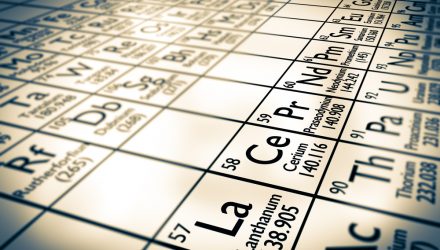Optica Capital, a strategic and innovative financial firm that designs, launches, and manages themed indexes, launched its first exchange traded fund, the Rare Earths and Critical Materials ETF (NYSE Arca: CRIT).
Tracking the EQM Rare Earths and Critical Materials Index (CRITNTR), CRIT features many of the minerals and materials deemed by governments worldwide as being critical to their economic and national security. The ETF will give investors access to growth companies that produce these critical materials, including minerals and metals that are essential in many consumer and industrial sectors. These materials are used in the manufacturing of green energy products such as electric vehicles, solar panels, and wind turbines; global communications technology, including satellites, smartphones, and computers; and national defense tools such as submarines and fighter jets.
“When it came to powering the planet, the 19th century was the century of coal and the 20th century was the century of oil,” said Jerry Hicks, CEO of Optical Capital, in the news release announcing the fund. “We believe the transition to more environmentally positive measures and the vital input of certain elements means that the 21st century will undoubtedly be the century of green energy, underpinned by rare earths and critical materials. This position is the foundation of the CRIT ETF.”
CRIT is born from a recently updated United States Department of the Interior list identifying certain minerals and metals as critical to the economy, citizen well-being, and national security. Optica Capital also examined similar lists from governments in the European Union, Canada, and Australia.
Hicks added: “In recent weeks we have seen how vital and fragile commodity supply chains are to countries. For example, due to recent world events, the price of nickel has risen sharply and the strategic supply of rare earths has become a major topic of concern.”
The fund also highlights the importance of the supply chain process involving rare earths and critical materials that make up some of the world’s most desired products. Derek Bone, Optica Capital chairman, cited electric vehicles, “which have risen in popularity across the globe,” as an example.
“We are aiming to highlight the gaps between increasing demand and deepening shortages of the critical supply of minerals and metals like rare earths, copper, lithium, and cobalt, which are heavily relied upon in the EV and battery production process,” Bone said. “Considering that it usually takes over 10 years from the announcement of discovery to add new minerals and metals into the supply chain, we have an excellent theme for exposure to growth opportunities.”
CRIT is made up of approximately 51 companies that meet standards for the development, production, and use of rare earths and critical materials. The Optica team chose companies that align with the rules of the fund’s passive investment strategy. The fund seeks to withstand market volatility and to have a long-term presence in portfolios. Additionally, the companies making up the ETF share a common theme of supporting the worldwide “green energy” movement.
“Gen X and millennials are major drivers of the world economy,” said Ross Denford, director of funds management at Optica Capital. “These generations were the first to support in large numbers the theme of ‘going green.’ We identified the trends and volume behind the movement.”
CRIT has an expense ratio of 0.85%.
For more news, information, and strategy, visit ETF Trends.
